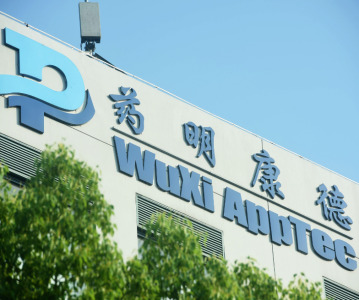Rentschler Invests EUR 24 Million in Stainless Steel Bioreactor Manufacturing

Rentschler Biotechnologie GmbH, a contract manufacturing organization (CMO) for the development and production of biopharmaceuticals, announces the investment of €24 million to build a Twin system with two 3000-L stainless steel bioreactors mainly targeting market supply at the company’s site in Laupheim, Germany. The Twin system should be operational in early 2017.
The Twin system is designed for running two main bioreactors in parallel with one shared downstream processing unit thus providing higher throughput while reducing incremental labour costs involved. It integrates well into the existing 3000-L GMP line and will more than double the production capacities for cell culture-derived proteins. The Twin system allows us to run cell culture processes in fed-batch mode with a very high output in a single suite.
“The expansion will strengthen our global competitiveness and increase our market awareness of being a CMO partner of first choice all the way down from early clinical trials up to approval and market supply with a wide range of manufacturing technologies to offer” explains Frank Ternes, Chief Business Officer at Rentschler.
In the last few years, Rentschler has been heavily investing in single-use technology and only recently announced that it will add a new 2000-L single-use bioreactor. Nevertheless, manufacturing in stainless steel is far from being outdated. Rentschler is experiencing a high demand for stainless steel bioreactor capacity, mainly for market supply, but also for late clinical phases. The criteria for bioreactor selection includes the characteristics of the product to be manufactured, the approval phase, the expected volume requirements, the required flexibility, and competitive pricing due to optimal technological fit.
Related News
-
News WuXi to sell CGT manufacturing unit to US-based Altaris LLC
At the tail end of 2024, Chinese-based CDMO WuXi AppTec announced the signing of their deal with private equity firm Altaris LLC, confirming the sale of WuXi Advanced Therapies, the cell and gene therapy manufacturing arm of WuXi AppTec. -
News Women in Pharma: Our hopes for 2025 and beyond
Our last instalment for 2024 of the Women in Pharma series brings you messages direct from the Informa Markets CPHI team as they discuss the advice and insights they have carried throughout their roles working at CPHI, and what they hope to see for the... -
News CPHI Milan Wrap-Up Report: Conference Highlights
Discover the emerging and trending topics of the pharmaceutical industry with our CPHI Milan Conference Highlights, with exclusive insight from pharmaceutical leaders and experts! -
News BIOSECURE Act not included in key defense spending bill for 2025
On December 7, 2024, the Biden administration revealed the 2025 National Defense Authorization Act, an annual defense bill specifying the budget and expenditures of the US Department of Defense. The controversial BIOSECURE Act was notably missing from ... -
News Lessons from CPHI Milan 2024: Sunny Intervals for Pharma Manufacturing?
As the 2024 CPHI conference wrapped up in Milan, we caught up with L.E.K. Consulting – a global strategy consulting firm with deep expertise in pharma manufacturing – to discuss evolving market perspectives and business outlook. -
News Trump 2.0: What does the US election result mean for the healthcare industry?
After Trump won the Presidential election in the US in early November, we take a look at some of the implications a new Trump administration could have on the health and pharmaceutical industry, and on US patients. -
News Women in Pharma: Reflections from Behind the Scenes
In this instalment of our monthly series, the team that brings you the Women in Pharma series each month sits down for a heart-to-heart on what the series means to them, and how they hope to continue their work in the future. -
News Scaling the Industry: CPHI Scale-Up Market interview with YSK Laboratories
For the first time, CPHI Milan hosted the CPHI Start-Up Market, expanding support for emerging and small-sized enterprises in their transition to the next level of growth. In this interview, we spoke with Yuvansh Khokhani, Managing Director of YSK Labo...
Position your company at the heart of the global Pharma industry with a CPHI Online membership
-
Your products and solutions visible to thousands of visitors within the largest Pharma marketplace
-
Generate high-quality, engaged leads for your business, all year round
-
Promote your business as the industry’s thought-leader by hosting your reports, brochures and videos within your profile
-
Your company’s profile boosted at all participating CPHI events
-
An easy-to-use platform with a detailed dashboard showing your leads and performance

.png)





